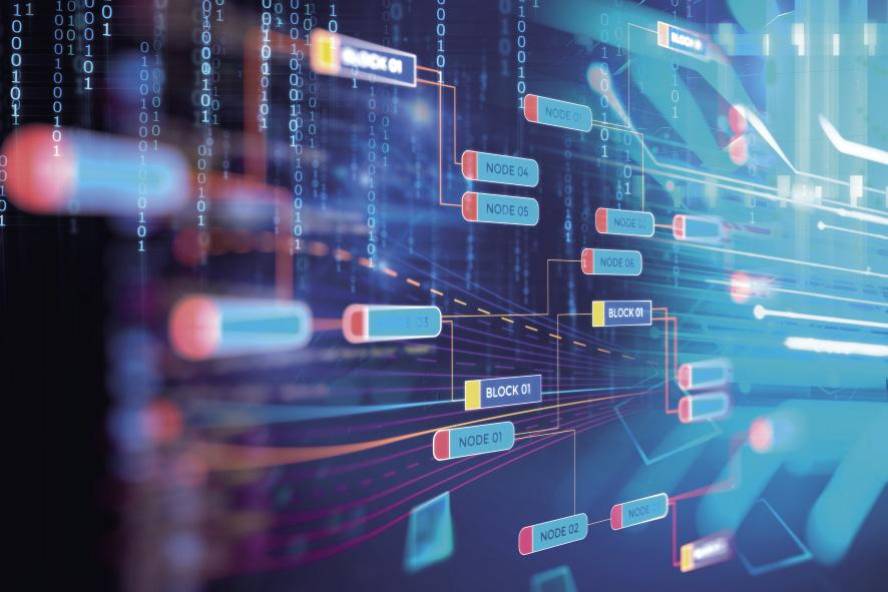Blockchain: distributed, reliable and inmanipulable transaction storage
The creator of cryptocurrency Bitcoin has also invented the technology of blockchain, people or groups unknown as Satoshi Nakamoto. In the same article he described the concept of bitcolin and described the technology of block chains in 2008, and in 2009 the first implementation was launched along with bitcolin. This technology is the system used to store and certify currency transactions.
The creation of this digital currency was based on the premise that it would function on its own with only technology, without the participation or supervision of any organization. And, of course, the system should be reliable and protected against fraud. All this endorsed by the design of the block chains, which has been revealed during the eight years of operation.
Characteristics of block chains
When you have to digitally save a record of anything, the centralized databases controlled by someone are the most common. However, the technology of block chains is a distributed and decentralized system. The system consists of several nodes connected through a network, each of which has a copy of the block chain and the Blockchain software that is used for storage. This makes the system reliable, since in case something happens to a node, there are many others to keep the system running.
The distributed system also guarantees inmanipulability. And it is that to make fraud in a database you only need to access it. Besides the attackers can access this access, there are several people who integrate it, so the system is quite weak. However, in a distributed system of block chains, it would be necessary to get control of all nodes (or at least half) and perform the change in all block chains. It is much more difficult.
What's more, the very operation of block chains makes it virtually impossible to scam. When someone wants to register a transaction in the block chains, all nodes ensure that the transaction is legitimate. Specifically, in the case of vitcoina, if you have to enter an amount in a purse, they ensure that the same amount will be deducted from another purse or that the owner of this purse has acquired this money through mining (mining in digital currencies usually consists of solving complex cryptographic problems through computers).
But, in addition, transactions are organized into blocks in which each of them is assigned a digital signature or hash that depends on the content of the block and has a considerable computational cost for its calculation, and each block also keeps the signature of the previous block (for this reason, the block chain, since each block is related to the previous one). In this way, a person with a relatively high computational capacity could modify a transaction of the last or penultimate block before the next block arrives (although for this it should have control of all nodes), but a block transaction of some depth in the block chain could not be modified by the capacity of all the computers of the world.
Multiple applications Multiple applications
For all these features, the technology of block chains is very interesting for many other applications. And it is that they have begun to be used in many other things and that in the future will be used in many more things.
Although cryptocurrency networks are public and open, private networks with block chains can also be made. For example, the log of operations between companies of a group of companies can be saved in a block chain, each with a node and with exclusive access. Or even a single company can create a block chain with several nodes installed. Its use in the financial and/or logistical field is increasingly widespread, since in the first of them it is important that there is no possibility of fraud and in the second because it guarantees the traceability of food, medicines, etc.
It can also be used to save records of citizen information: medical records, births, marriages and deaths, etc. Or as a notary system: sales records of land and houses, contracts... Or to keep and count the electoral votes. For example, if it had been used in the referendum of 1 October of Catalonia, once voted, it could not have been annulled in any way that vote, unlike what happened with the subsequent theft of ballot boxes by the Spanish police. Of course, confidentiality must be guaranteed in these cases, but for this purpose mechanisms can be implemented in the technology of block chains.
It has already been mentioned that to accept a transaction all nodes must first guarantee the legitimacy of it. Logically, the algorithm that determines legitimacy must be adjusted to each case of application. For example, in the case of cryptocurrencies, we have said that it is checked whether mining has been carried out or whether the amount of another portfolio has been eliminated. But if you want to use it to keep birth, death, and marriage records, for example, you will ensure that the order has been dictated by an official authorized to do so. Or in a voting system, the system will ensure that the voter is registered and has no longer voted.
If you want to mount an application that uses block chain technology, there are several free or commercial systems to choose from: Hyperledger, Openchain, IBM Blockchain... Everything points to an unbeatable future in the technology of block chains.







